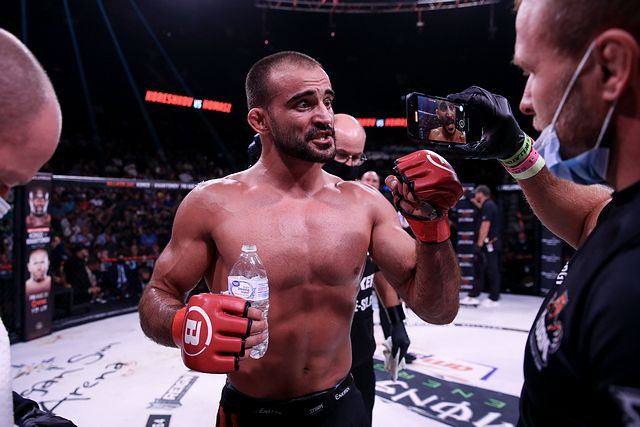Opinion: Breaking Barriers, Knocking Down Doors
Golf was first played in Scotland in the 15th century on the Old Course at St. Andrews. The sport’s governing body, the aptly named Royal & Ancient Golf Club of St Andrews, was born on these grounds. Centuries after the idea of an 18-hole round took root, golf is played under uniform and transparent rules regardless of where in the world a person tees off.
Advertisement
Castren’s win in her 15th LPGA start is a reminder that investments in the growth of a game, of the nurturing of athletes into professionals, is worthwhile because there are always barriers to break, doors to knock down, audiences with imaginations to capture … and the benefits of all of this are undeniable.
Castren’s breakthrough is likely to motivate the next generation of
Finnish golfers, which is now unique compared to its predecessors
since young people with a gift for golf finally have an idol like
them to look up to.
This, it should be said, is the secret sauce for popularizing sports in parts of the world where they don’t have any prior tradition.
Until 1984, for instance, there weren’t any golf courses in China. The communist party-led government deemed the sport too bourgeois for the people so the game wasn’t played by anyone. Then the door was opened to the game and nearly 700 courses have been built across the country. As the public adopted the game, China began producing its share of elite players.
Shanshan Feng became the first Chinese player on the LPGA Tour in 2008, and four years later captured the nation’s only Major championship. Last year, Li Haotong became the first Chinese male to take the lead at a Major.
The stakeholders who have built businesses in mixed martial arts should aim to do the exact same thing.
This is why investing in underserved parts of the world is one of the most important strategies in support of sustaining an upward trajectory for MMA as a global sport. Weili Zhang, UFC’s first Chinese champion, would prove the point.
That is why an Italian, Marvin Vettori, fought Israel Adesanya, a Nigerian-born champion out of New Zealand, for the UFC middleweight title on Saturday night. Why a Mexican-born fighter, Brandon Moreno, made good on his promise to win a UFC title — and in doing so etched his name into MMA history as the first major title holder from his boxing-enthused nation. Why an undefeated Ukrainian, Yaroslav Amosov, admirably handled one of the best welterweights on the planet, Brazil’s Douglas Lima, to claim the Bellator belt and the first major MMA title for his people.
Looking back a decade or two, few people would have thought so many top MMA fighters from various backgrounds could have happened so quickly.
Brazil, Japan and the U.S. were the first nations to embrace MMA. The UK followed when their fighters were provided the infrastructure to improve and the opportunity to showcase their abilities. Canada’s embrace of the sport ties directly to the rise of Georges St-Pierre. European nations started to leave their mark after fighters backfilled missing skills and learned to utilize their strengths. Ireland’s Conor McGregor forced MMA into the consciousness of Emerald Isle and beyond. South American fighters beyond Brazilian borders are increasingly prominent and promising. Khabib Nurmagomedov opened the eyes of the Muslim world, and ushered in an era of Dagestani dominance. Nigeria boasts two UFC champions, Cameroon another, and Africa is regarded as the sport’s next great frontier.
Four years ago, the same could be said for Mexico. Moreno was just a name in a hat — a kid from an untapped MMA market who dared to believe he would be a UFC champion someday. By defeating Brazil’s Deiveson Figueiredo, Moreno immediately turned himself into the face of Mexican MMA.
If the 27-year-old Tijuanan retains the title for a while, the effect of his success will pay dividends for years to come. If not, his feat still deserves to resonate as an inflection point — an unmistakable moment that signals Mexico is prepared to produce world-class mixed martial artists after years of investing in the region.
Breakthroughs like Moreno’s can’t be undersold as a factor in MMA’s push from the darkness to its brightest possible future. And geographical firsts aren’t the only way this happens. Trailblazers, by definition, step into the unknown to do something no one else has. Last Thursday, Claressa Shields helped prove the point.
The first American boxer, female or male, to capture consecutive Olympic championships or hold undisputed world titles in two weight classes at the same time didn’t try MMA at the tail end of her competitive days. She did this in her prime.
Stepping into a pro MMA bout is not something elite 26-year-old boxing stars do, and this made Shields’ decision to take a seven-month detour from a lifetime of pugilism to compete in a fight with a thousand unknowns a moment that could stand the test of time.
Given enough fan interest, given enough resources for athletes who are compelled to fight no matter where in the world they’re from, MMA can expect to unearth new stars from previously untapped enclaves across the globe. As that happens, mixed martial artists, like golfers and boxers, will get what they want: a chance to make a mark and inspire the dreamers who come up behind them for years to come.
« Previous Guram Kutateladze Wants to 'Punish’ Paddy Pimblett for Russo-Georgian War Jokes
Next Stand and Deliver: UFC on ESPN 25 »
More




 UFC News & Features
UFC News & Features


